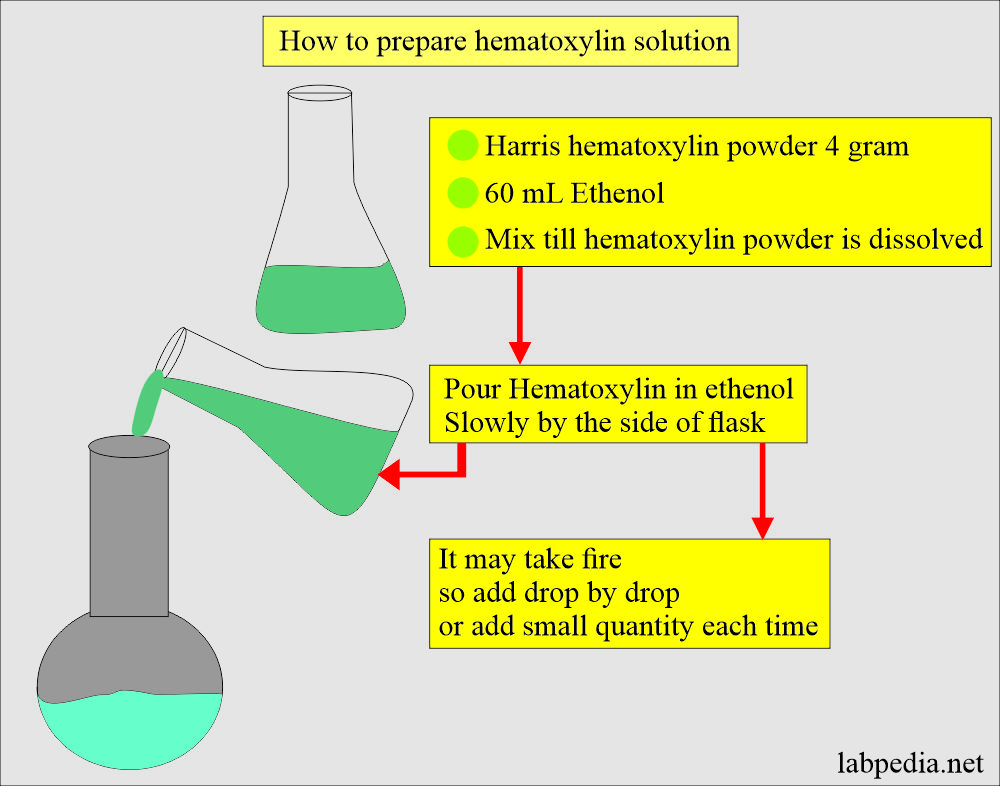Solutions:- Part 5 – Hematoxylin solution Preparation
Hematoxylin solution
The reagents needed are :
- Hematoxylin powder (Harris hematoxylin is preferred).
- Good hematoxylin powder is brown powder.
- Potash alum (Pattkari, known in Urdu).
- Mercuric oxide.
- Ethanol.
- Distal water.
Steps to make Hematoxylin solution:
Reagents for Hematoxylin solution:
- Weigh hematoxylin 4 G for 900 mL solution.
- Weigh Mercuric oxide 2 G for 900 mL solution.
- Weigh potash alum 100 G for 900 mL solution.
- Measure 60 mL ethanol.
- Distal water 800 mL.
Procedure for Hematoxylin solution preparation:
- Boil 800 mL water and add Potash alum till it is dissolved.
- Mix 4 grams of hematoxylin in 60 mL ethanol. Shake well to dissolve it.
- When the potash alum is dissolved, add the hematoxylin + ethanol solution.
- Be Careful to add ethanol-dissolved hematoxylin because there are chances for fire or bursting of the Potash alum solution due to alcohol in it.
- So remove the potash alum from the heater and add hematoxylin slowly by trickling it alongside the beaker.
- After adding the hematoxylin solution, now on low heat and add mercuric oxide.
- Keep on heating on slow heat till mercuric oxide is dissolved, and now the color of the solution will give a pinkish hue.
- Adjust the timing of hematoxylin color for staining of the slides, which may be from 1 minute to 3 minutes with this solution.
- Time may vary from solution to solution and lab to lab.
Questions and answers:
Question 1: What precautions are important to prepare the hematoxylin solution?
Question 2: Can you give definite timings for the hematoxylin stain?


Quit helpful thank you so much
Thanks.
Yes it was helpful…Thank you!
Thanks.
Good evening sir.
I have some problem with hematoxilin because I feel the tissue is not taking colour even I keep them for 10 minutes in hematoxilin. Same procedure for preparation I followed u mentioned above. Please guide me how can I solve this problem.
Please check your hematoxylin powder, which may not be of good quality. Also follow all steps which I have told in the preparation of the solution.